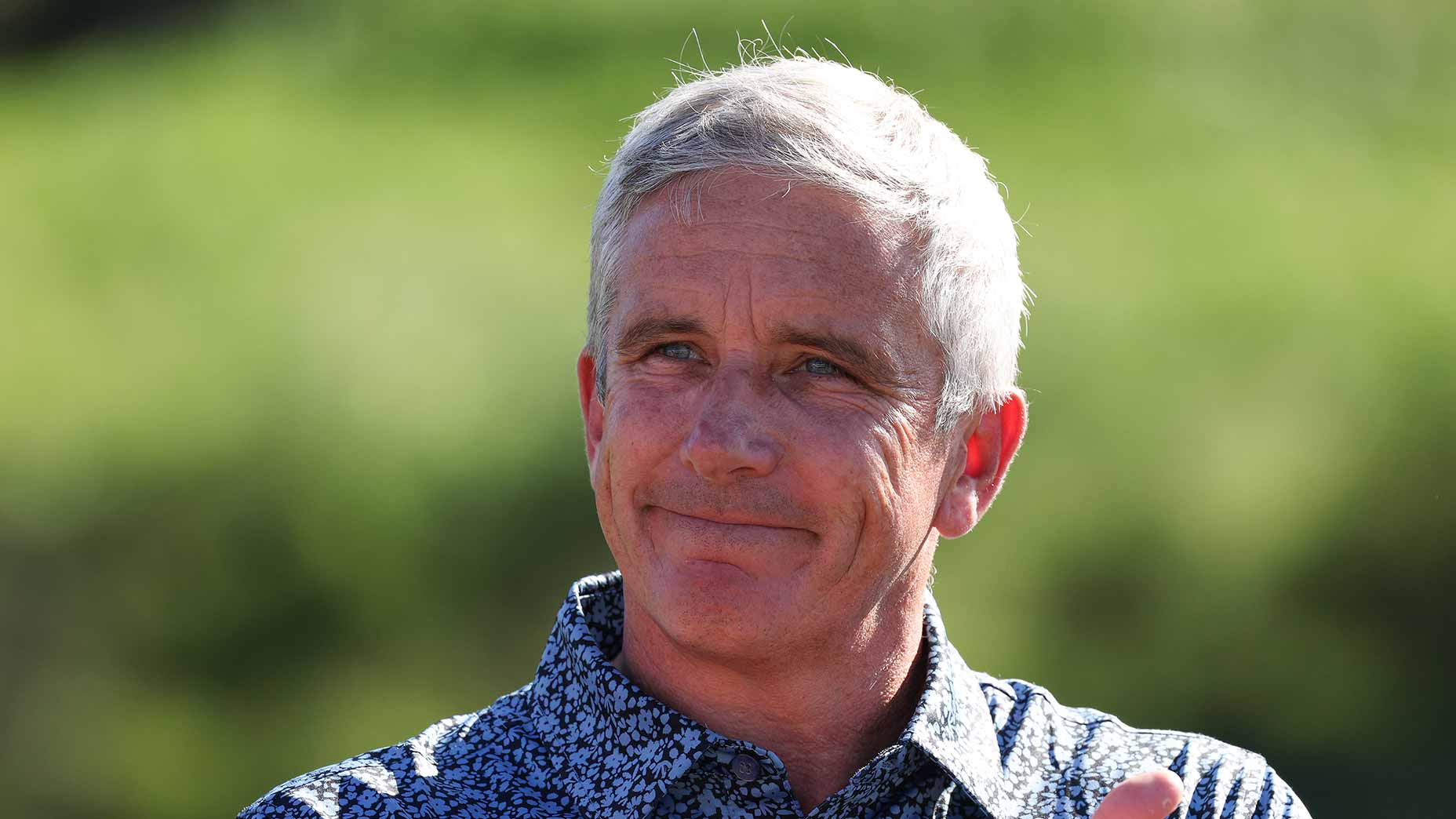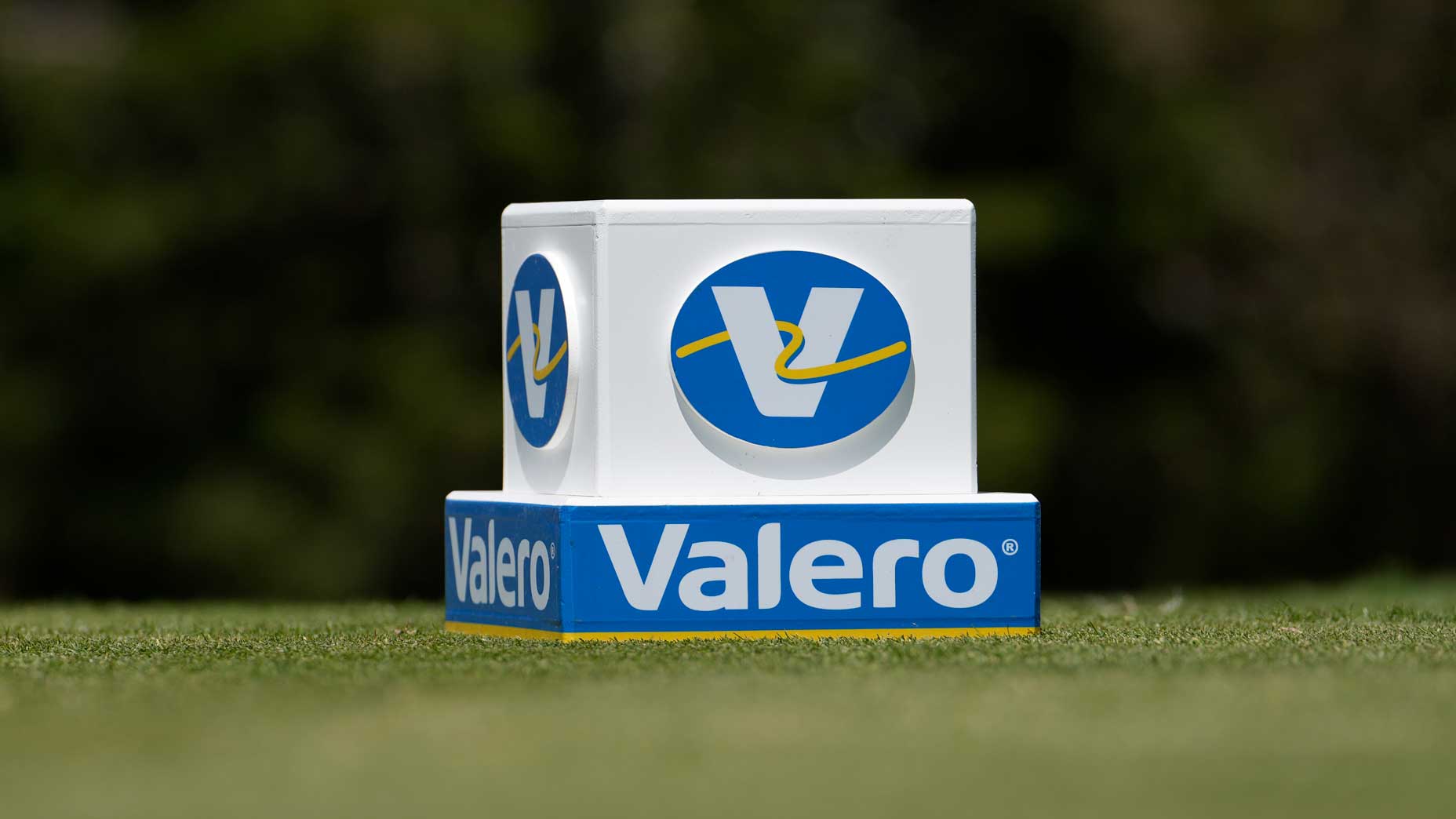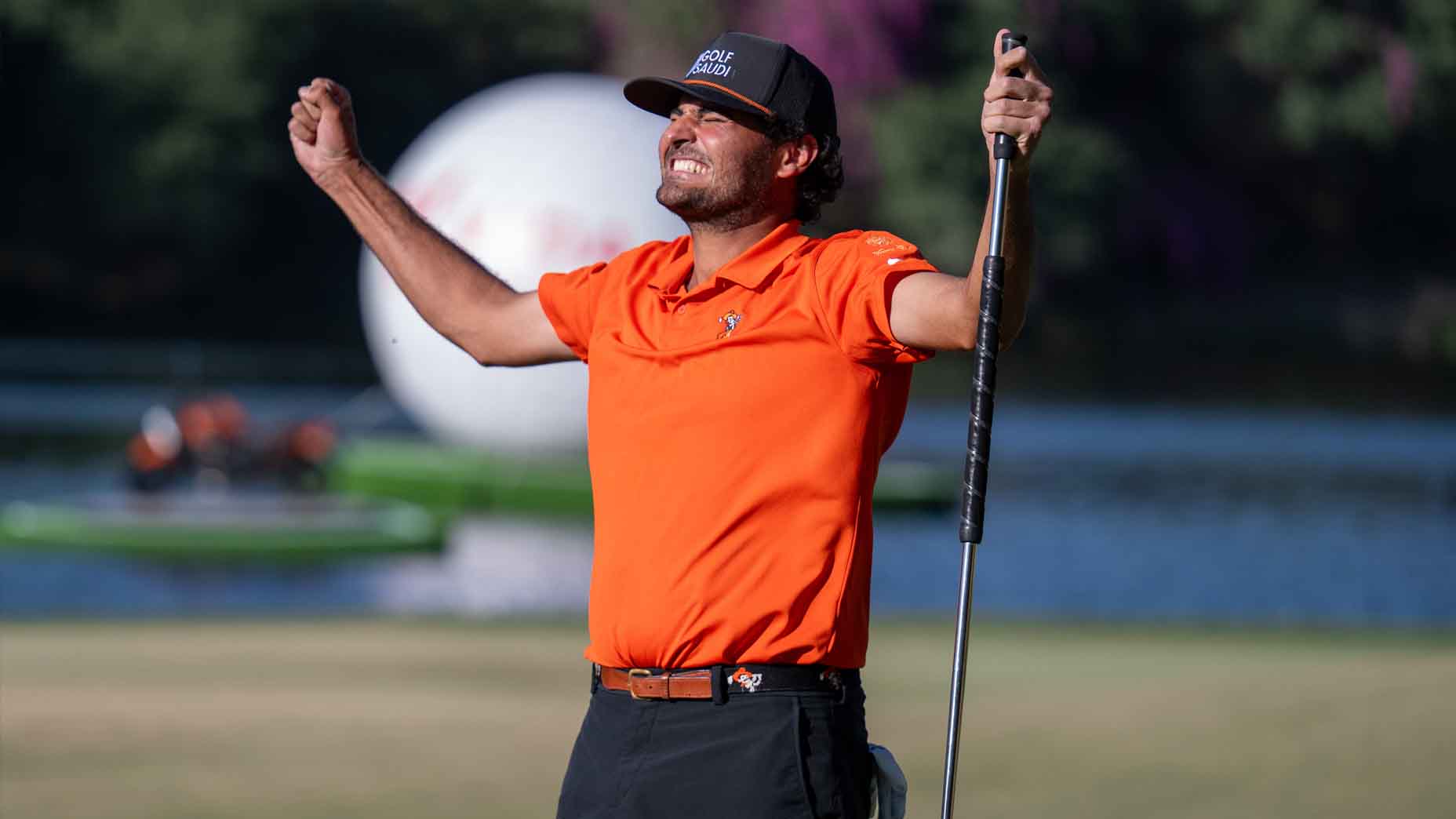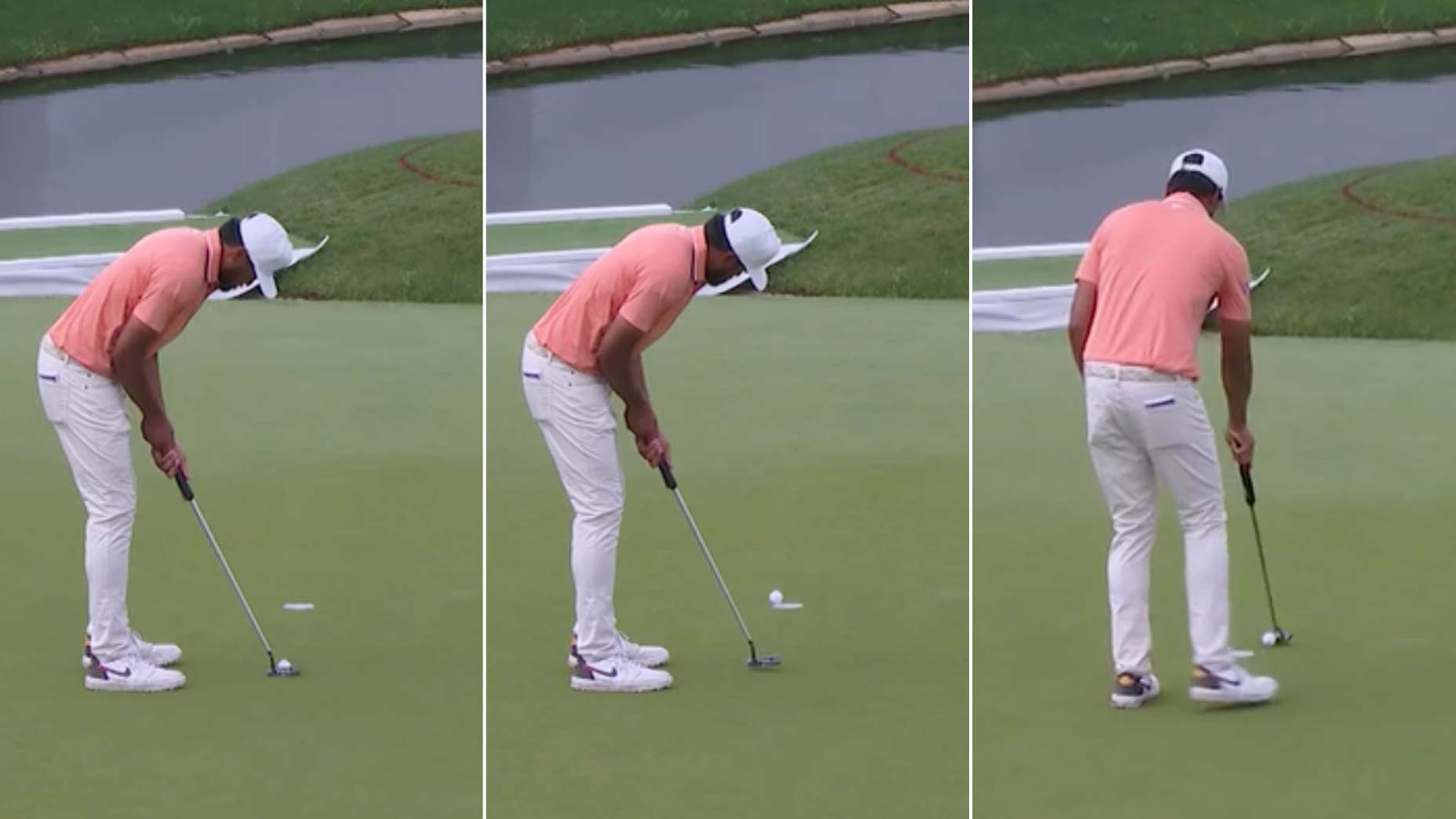Here’s one surprising reason the PGA Tour hasn’t addressed slow play
- Share on Facebook
- Share on Twitter
- Share by Email

Jay Monahan offered a surprising reason for the Tour's inaction on slow play in a SiriusXM interview.
Getty Images
You might be tempted to believe that golf has a slow-play problem.
The first five months of 2023 have provided more than enough evidence. In one stretch from January-March of this year, the PGA Tour went months without setting a Friday cutline. At the Masters, Brooks Koepka took the unusual step of verbalizing criticism of his own after Sunday’s final round slowed to a crawl. At the RBC Heritage last month, some fans could be heard jeering at one of the perceived offenders, tournament contender Patrick Cantlay.
For a while now, it’s felt like golf stood on the precipice of slamming headfirst into its own baseball-level speed crisis. But in an interview with SiriusXM PGA Tour radio, PGA Tour commissioner Jay Monahan offered a different interpretation.
“You know, listen, I think pace of play is something that we always talk about. I think Max Homa said it best, you know, if we can get better, we’re going to get better,” he said. “The reality is when you’ve got field sizes of 144, 156, our team does everything we can to make certain that we’re moving play along.”
But, Monahan says, there’s a common misconception about the pace of play in golf: “moving play along” doesn’t always correlate to better business. In fact, sometimes fast play can have adverse consequences for the PGA Tour.
As Monahan explains it, it’s an important piece of the Tour’s broadcast agreements with CBS and NBC that its tournaments fill the entirety of the “broadcast window” — or scheduled time on television. When an event finishes early, that’s a great thing for pace of play, but it isn’t necessarily one for Tour’s broadcast partners who sell advertising for the full final hour of play. If an event ends early, it means that advertisers don’t get the full scope of what they paid for, which is bad news for the networks and, by extension, for the PGA Tour.
“We’re in the entertainment business. We’re on television,” Monahan said. “Look at the number of times that we’re finishing on time, if not early. And that’s a frustration of mine because we don’t want people turning off CBS or NBC before the competition, before six o’clock.”
Of course, there’s an argument that better pace of play could work in conjunction with the Tour’s broadcast windows, allowing the PGA Tour to show more of its final rounds on television while shifting back its tee times to accommodate it the full broadcast window. That situation would be preferable to the Tour, its broadcast partners and its fans — but there’s a good chance it could come at the cost of at least a handful of “on-time” broadcast finishes.
How slow play messes with your mind, according to Top 100 TeachersBy: Nick Dimengo
“It’s something that we spend a lot of time on,” Monahan said. “We’re going to talk about it at our Player Advisory Council meeting. We get into places on the weekend where, you know, there’s a lot on the line. And I think those are the moments that frustrate fans, but at the same time, there is a lot on a line. And then when you look at the things that you can do to improve it, I mean, we finished the Zurich Classic 20-something minutes early.”
Ultimately, the Tour’s current approach toward pace of play is incentivized by its current approach to business. Changing one would mean changing the other. That’s not out of the question, but it’s certainly not the first choice.
“I think when people are talking about it’s helpful because it refocuses you on the issue or the subject,” Monahan said. “So it gives us an opportunity to go back in our system to talk about it.”
In the meantime, Monahan says, there’s at least one light at the end of the tunnel.
“I would remind everyone that when we get into the 2024 season, these designated events are going to have player field sizes anywhere from mid 60s to 80. If there’s anything that you can do to improve pace of play, that’s it,” he said. “And I think that’s going to be a nice change for us and for our fans.”
Let’s just hope it doesn’t take too long to get here.
Latest In News

James Colgan
Golf.com Editor
James Colgan is a news and features editor at GOLF, writing stories for the website and magazine. He manages the Hot Mic, GOLF’s media vertical, and utilizes his on-camera experience across the brand’s platforms. Prior to joining GOLF, James graduated from Syracuse University, during which time he was a caddie scholarship recipient (and astute looper) on Long Island, where he is from. He can be reached at james.colgan@golf.com.










